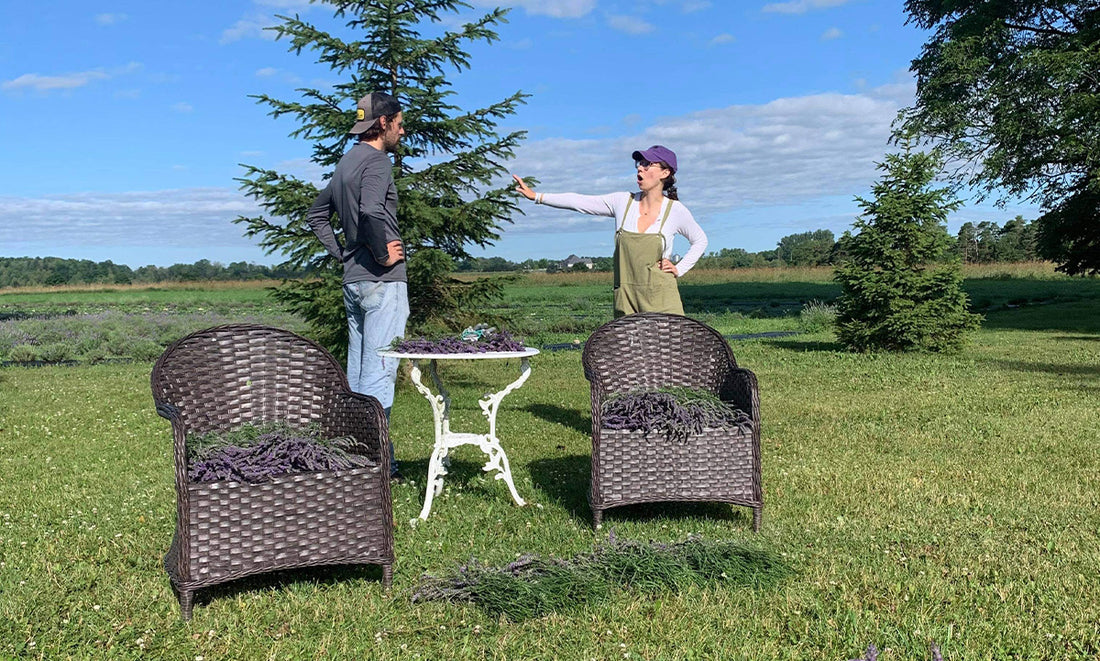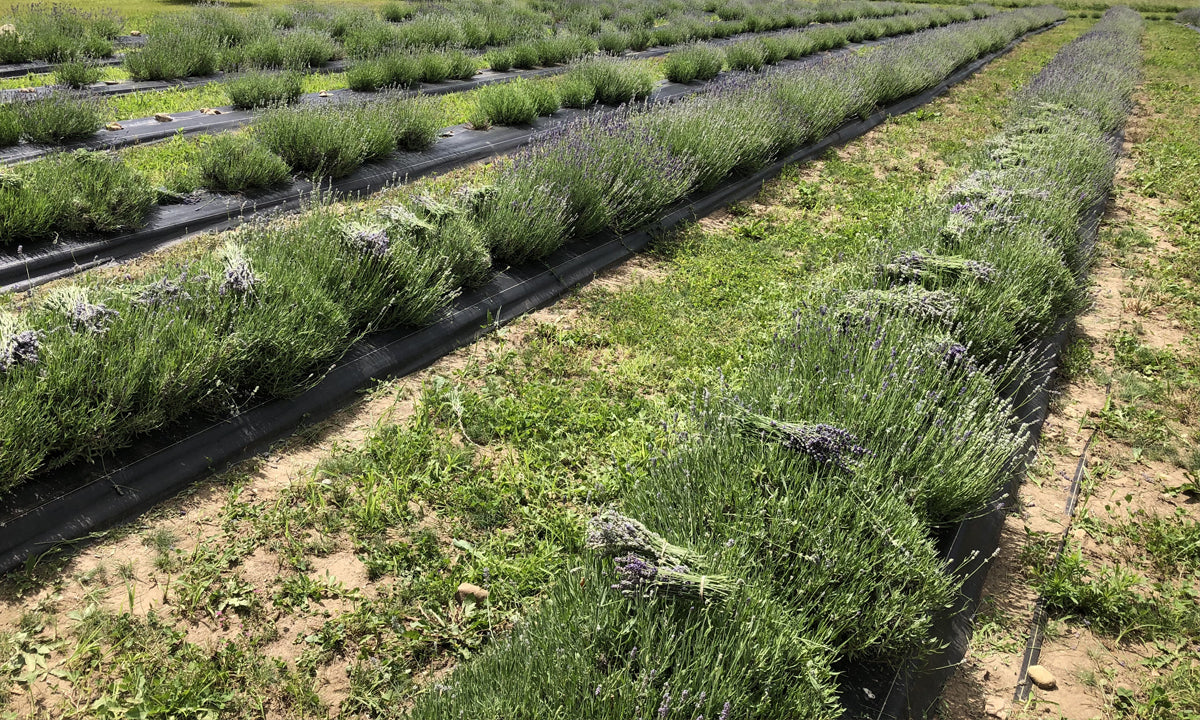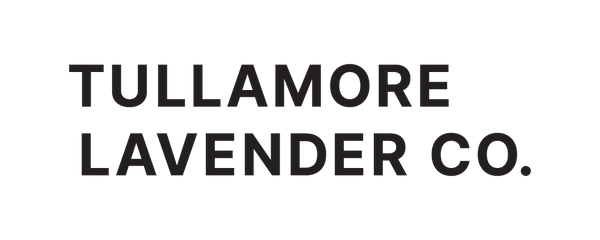
The Flow of Our Lavender Farm
Planning ahead is a must for us. Like many young farmers in Ontario, Steve and I work off-farm. Right now, we lavender farm because we love it. Hopefully one day it can be a full-time gig, but it isn’t yet. Most of our farm work needs to happen in the mornings, evenings and on weekends. So, prioritizing and planning are a must.
As we wrapped up our yearly planning and budgeting, I realized it might be interesting to share the yearly flow of our lavender farm. The bloom and harvest is only 5-6 weeks out of an entire year of farm work.
Ps. The photo above makes both of us laugh. It makes the lavender harvest (and our dynamic) look far more adversarial than it is in reality.
Jan-Feb: The Lavender Sleeps + So Do We
These months are dedicated to rest. Lavender goes dormant in the winter, so we also take this time to catch our breath. Resting in January and February allows us the mental and physical space for planning, idea generation and recharging. We do research, make plans for our growing season, create a budget and do fun things like taxes.

Mar-Apr: Waking up + Weeding
As the snow melts and our plants “wake”, we ramp up farm work. We remove our snow covers when temperatures are consistently about 10 degrees. Removal of the covers is a delicate balance; you want the covers to protect from frost and cold winds, but also want to avoid creating a greenhouse and warming the plants prematurely. Warmer weather means plant growth, which means we need to start weeding regularly. We do light pruning of our lavender plants and cut out any “winter kill”. The pruning helps sunlight reach the base of the plants and encourages regrowth.
May-Jun: Preparing for Harvest
May is when our plants really come back to life and by June we are replacing plants that are confirmed dead or planting new sections. We continue to weed and prune the plants, but add cutting grass and other landscaping task to our to do list. By the end of June, we are checking the plants regularly to see how the buds are developing. We are also preparing our drying shed for harvest and calling our local health inspector to ensure our set-up is approved for culinary processing.
July: The Lavender Harvest
By early July (and sometimes sooner) we are harvesting and drying our lavender. Each plant produces many small bundles of lavender. We hand cut, bundle and hang them in our drying shed. We harvest in the morning (when the plants have the most oil) and cannot harvest in the rain or when the plants are wet. We label all of our bundles with the variety and date of harvest. We also follow specific sanitization and handling practices for our culinary lavender.

Aug-Sept: Processing + Packaging + Pruning
As our lavender dries, we take it down, store it and/or process it. We remove the buds from the stems and then remove any leaves, stems or debris from the buds. Next up, we sift the lavender 2-3 times to ensure the buds are clean as possible. We do it by hand, so we slowly chip away at the processing when we have time. Once harvest is complete, we also need to fertilize and prune the plants. A healthy lavender plant needs to be pruned aggressively and given nutrients to thrive. In July, August and September, we also continue to weed, cut grass and prune growth on newly establishing plants.
Oct, Nov + Dec: Lavender Farm Wrap-up
The final three months of the year are quiet on the farm. This gives us time to focus on making our various products and then marketing/selling them. But by early December we are back in the plot to cover our plants with row covers. The covers are like blankets protecting the plants from the cold winter wind. We also often put up snow fence to block some of the winter wind. While many folx are doing their Christmas shopping, we are shopping too – but for next year’s lavender plants.
 Seeing our drying shed filled with lavender is a wonderful feeling. But there are A LOT of steps to get there and then EVEN MORE after. Sometimes folx balk at the cost of our lavender (or any lavender grown in Ontario). But as you can see, the labour required throughout the year adds up. It is a true labour of love. And when someone does appreciate our efforts/harvest/products it feels so fulfilling.
Seeing our drying shed filled with lavender is a wonderful feeling. But there are A LOT of steps to get there and then EVEN MORE after. Sometimes folx balk at the cost of our lavender (or any lavender grown in Ontario). But as you can see, the labour required throughout the year adds up. It is a true labour of love. And when someone does appreciate our efforts/harvest/products it feels so fulfilling.
Any questions about our yearly flow? Leave a comment below.
Xo, Stephanie

3 comments
Hi Ann – Here’s a helpful blog post from the lavender specialist with the Ontario Ministry of Agriculture, Food and Rural Affairs: https://onspecialtycrops.ca/2020/05/14/fertilizer-calculations-for-lavender/
Beautiful
I’m in zone 5b, just east of Ottawa so my lavender is covered until mid April. Ground doesn’t warm up full for another month. It’s been amended with dolomite lime. What’s the best time to fertilize and what type of fertilizer do you recommend.